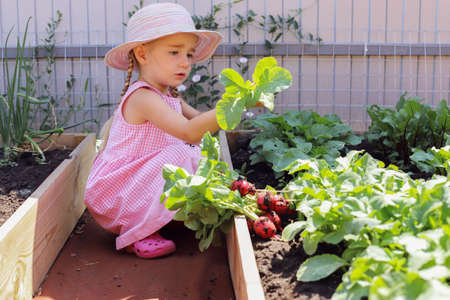Assessing Your Shed’s Current State
Before you can prepare your garden shed for the inevitable British downpour, it is crucial to first evaluate its present condition. Begin by examining the structural soundness of the shed—look for any signs of rot, warping, or damage to the framework, particularly around the base and roof where water ingress is most likely. Pay attention to the state of the doors and windows as well; ensure they close securely and that no gaps are evident where rain could seep through.
Next, scrutinise your shed’s waterproofing measures. Inspect the roofing felt or shingles for tears, missing sections, or general wear and tear. Check guttering and drainage systems (if fitted) to guarantee they are free from blockages and capable of directing rainwater away from the structure. Inside, look for evidence of damp patches, mould, or mildew along walls and flooring which could indicate leaks.
Finally, consider your current organisational setup. Are items stacked haphazardly on the floor where they might be vulnerable to water? Is there a system in place for keeping tools, supplies, and other belongings dry and accessible? By thoroughly assessing these key areas, you will be able to identify what needs improvement to ensure your garden shed remains both functional and weather-ready throughout the rainy season.
Smart Storage Solutions for the British Climate
When it comes to keeping your garden shed ready for rainy days, choosing storage solutions that withstand the unpredictable British weather is crucial. The UK’s frequent rain and damp conditions can quickly damage tools, supplies, and equipment if not properly organised and protected. By investing in weather-resistant options and arranging your shed thoughtfully, you’ll ensure everything stays dry, accessible, and ready for use whenever you need it.
Weather-Resistant Storage Materials
Selecting appropriate materials is the first step. In the UK climate, moisture-resistant shelving and containers are essential. Consider using galvanised steel or heavy-duty plastic shelving units instead of untreated wood, which can warp or rot over time. Sturdy plastic storage boxes with sealable lids help keep out moisture, while stackable designs maximise floor space.
Material Comparison Table
| Material | Weather Resistance | Best Use |
|---|---|---|
| Galvanised Steel | Excellent | Shelving, tool racks |
| Heavy-Duty Plastic | Very Good | Storage boxes, drawer units |
| Treated Timber | Moderate | Bespoke shelves (if well-sealed) |
| Untreated Wood | Poor | Avoid in damp environments |
Clever Organisation for Quick Access
Arranging items logically not only protects them from the elements but also helps you locate what you need during a sudden downpour. Install wall-mounted hooks or pegboards for hanging frequently used tools—this keeps them off potentially damp floors and allows air circulation to prevent rust. Store smaller items such as seeds, gloves, and hand tools in labelled waterproof containers on higher shelves to avoid accidental water ingress during heavy rain.
Tips for Damp-Proofing Your Shed Storage:
- Add silica gel packs or moisture absorbers inside storage boxes to tackle humidity.
- Use raised shelving or pallets to keep equipment off the ground.
- Consider weather stripping around doors and windows to minimise draughts and leaks.
- Keep a dedicated area near the entrance for muddy boots and wet gear to prevent spreading damp inside.
A Practical Approach for Every Gardener
No matter the size of your shed, adopting these smart storage strategies ensures your gardening essentials remain in top condition throughout even the wettest British weather. By combining durable materials with clever organisation, your garden shed will be both tidy and resilient—perfectly prepared for any rainy day project.

3. Keeping Essentials Dry and Accessible
When preparing your garden shed for rainy days, it’s crucial to prioritise the safe storage of vital gardening tools, wellies, and waterproofs. These essentials should be kept in a manner that guarantees both dryness and accessibility, so you’re never caught off guard by a sudden downpour. Start by assessing the current state of your shed’s interior—check for any leaks or damp spots and address them promptly to prevent moisture damage. Installing sturdy shelving units or wall-mounted hooks can significantly improve organisation and ensure that items like trowels, secateurs, and gloves are always within arm’s reach. Designate a dedicated space near the entrance for your wellington boots and raincoats; this not only makes grabbing them easy but also helps contain mud and water brought in from outside. Consider adding sealed plastic containers or lidded storage boxes for smaller tools and accessories, keeping them safe from humidity and rust. For added convenience, label each container clearly using weatherproof tags, making it simple to locate what you need even on the gloomiest British afternoons. By implementing these practical storage solutions, you’ll ensure that every essential remains dry, organised, and ready for action whenever the rain arrives.
4. Creating a Rainy Day Workstation Inside Your Shed
Transforming your garden shed into a haven for those drizzly afternoons starts with setting up a comfortable and functional indoor workspace. This dedicated area is ideal for potting, tinkering with small projects, or simply enjoying a quiet moment while the British weather does its worst outside. To make your shed truly rain-ready, consider both practicality and comfort in your setup.
Essentials for a Cosy Indoor Workspace
Begin by selecting a sturdy workbench that can handle soil, tools, and the odd muddy boot. Position it near a window to maximise natural light on gloomy days. Add an ergonomic chair or stool to keep you comfortable during longer sessions. For extra warmth, include a draught excluder at the door and perhaps a small portable heater—just remember to follow safety guidelines and never leave it unattended.
Must-Have Items for Your Rainy Day Shed Setup
| Item | Purpose |
|---|---|
| Workbench | Stable surface for potting & projects |
| Ergonomic Chair/Stool | Comfort during tasks |
| Kettle & Mugs | Enjoy a proper cuppa while you work |
| Portable Heater | Stay warm on blustery afternoons |
| Draught Excluder | Keep chills at bay |
| Shelf Storage | Organise pots, seeds, and tools efficiently |
Add a Touch of Comfort: The Proper Cuppa Station
No British shed workstation would be complete without provisions for tea. Set up a compact kettle, stash some teabags (Yorkshire Tea or PG Tips are always safe bets), and keep a couple of mugs handy. Store milk in a cool box if you don’t have electricity. Not only does this make your shed feel homely, but it also encourages regular breaks—a vital part of working safely and effectively.
Practical Tips for Maintaining Your Workstation
- Wipe down surfaces regularly to prevent mould from damp conditions.
- Store electrical items off the ground in case of minor flooding.
- Keep commonly used tools within arm’s reach for efficiency.
By carefully planning your rainy day workstation, your garden shed becomes much more than just storage—it’s a welcoming retreat for creativity and productivity, no matter how wild the weather gets outside.
5. Shed Maintenance Tips for Year-Round Protection
Keeping your garden shed in top condition is essential, especially when preparing for the inevitable British downpours. Routine maintenance ensures that your shed remains functional, dry, and a safe haven for your tools and belongings all year round. Below are key tasks to help you safeguard your shed against the wettest seasons.
Clear Gutters and Downpipes Regularly
One of the most common causes of water ingress is blocked gutters and downpipes. In the UK, autumn leaves and debris can quickly build up, leading to overflowing water that seeps into your shed. Schedule a monthly check during wetter months to remove blockages and ensure rainwater is effectively diverted away from your shed’s foundations.
Inspect and Renew Seals
The seals around doors and windows are critical barriers against wind-driven rain. Over time, rubber seals may perish or become dislodged. Inspect these areas at least twice a year—preferably before autumn sets in—and replace or repair any compromised sections. Applying weatherproof sealant can also provide an extra layer of protection against persistent British drizzle.
Treat Timber Surfaces
Wooden sheds require regular treatment to prevent rot and warping caused by damp conditions. Apply a high-quality wood preservative every couple of years, focusing on areas most exposed to the elements such as the roof edges and lower wall panels. This not only maintains the structural integrity but also extends the life of your shed considerably.
Check Roof Coverings
Your shed’s roof takes the brunt of heavy rainfall. Inspect felt or other roofing materials for tears, loose fixings, or signs of moss growth which can trap moisture. Promptly patch any damage and consider adding a waterproof membrane for added resilience during particularly wet winters.
Promote Good Airflow
Dampness inside a shed can lead to mould, rust, and unpleasant odours. Keep vents clear and occasionally prop open doors on drier days to allow fresh air to circulate. For added protection, consider installing a small louvre vent or moisture absorber inside.
By establishing these simple but effective maintenance routines, you’ll ensure your garden shed stands strong through every rainy spell. A well-maintained shed not only protects your equipment but also provides peace of mind, knowing you’re always ready for whatever the British weather brings.
6. Personalising Your Shed for Comfort and Enjoyment
Transforming your garden shed into a true rainy day sanctuary goes beyond organisation; it’s about creating a welcoming, comfortable space that you’ll genuinely look forward to using during Britain’s frequent drizzly spells. Begin by adding weatherproof seating—such as a sturdy, cushioned chair or a small sofa with washable covers—to ensure you have a dry and inviting spot to settle down. Layer the space with soft blankets or throws, which not only provide warmth on chilly afternoons but also add a touch of homely charm.
Curating Your Ideal Reading Nook
No rainy retreat is complete without something to read. Reserve a shelf or waterproof box for your favourite books, magazines, or even crossword puzzles. For an added British touch, consider including classic titles or local authors to enhance the atmosphere and offer an escape from the grey skies outside.
Creating Ambience
Think about lighting—battery-operated lanterns or fairy lights can introduce a gentle glow perfect for reading or relaxing as rain taps on the roof. Adding a small rug underfoot will help insulate against the cold floor and make the space feel less utilitarian and more like a personal hideaway.
A Final Flourish
Personal touches such as framed family photos, potted plants, or even a stash of your favourite biscuits will complete your shed transformation. By tailoring the interior to suit your tastes and needs, your garden shed becomes more than just storage—it turns into a cherished retreat, ready to offer comfort and enjoyment whenever Britain’s unpredictable weather calls for it.


